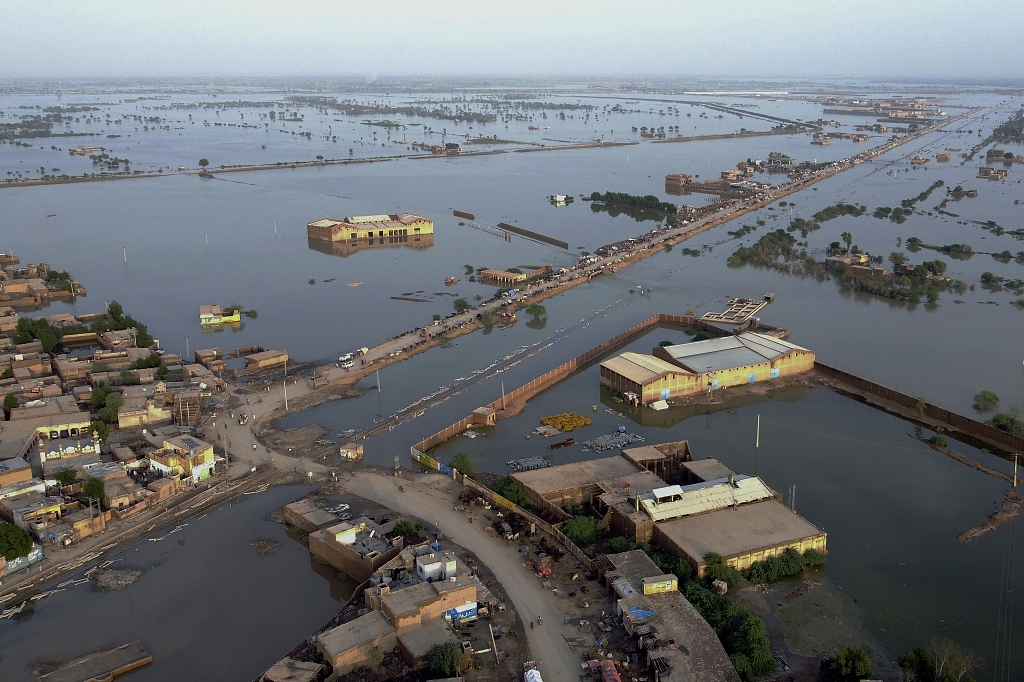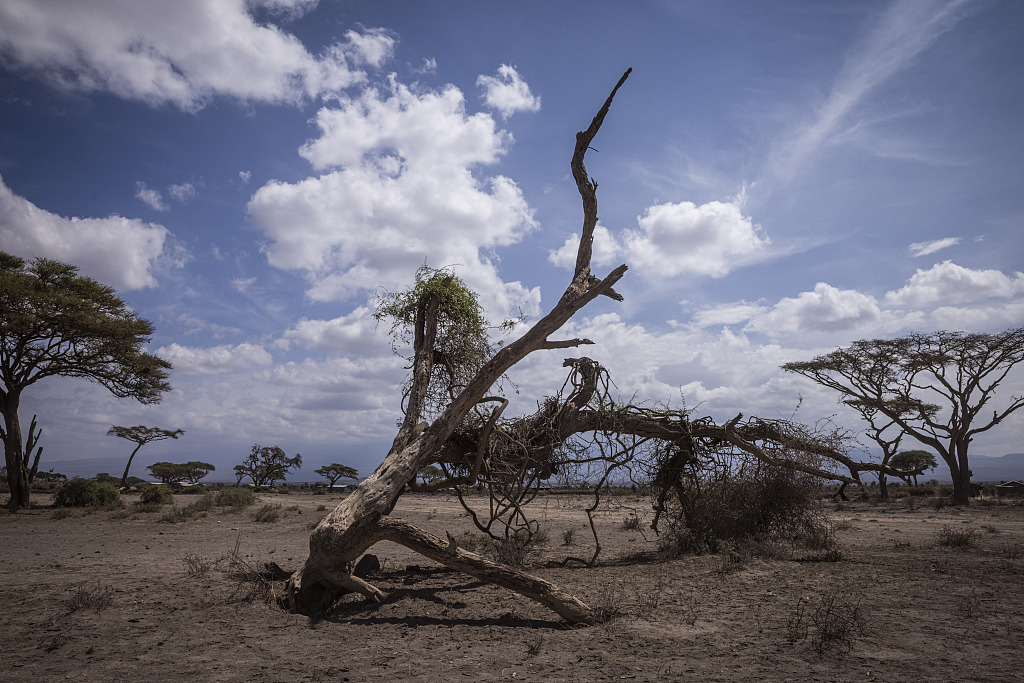A recent study published in Science Advances has shown that the occurrence of simultaneous climate extremes is increasing globally due to human-induced climate change, and this trend is projected to worsen in the future.
The research team, comprising researchers from Australian and Chinese universities, utilized monthly climate observations from around the world, including temperature and precipitation data, as well as an ensemble of 11 general circulation models.
Bofu Yu, co-author of the paper and professor from Australia's Griffith University, said while the future risks of climate extremes varied geographically, they are becoming more interlinked through further warming, increased climate variability and the spatial dependence of climate extremes.

Homes are surrounded by floodwaters in Sohbat Pur, Pakistan, August 29, 2022. /CFP
Homes are surrounded by floodwaters in Sohbat Pur, Pakistan, August 29, 2022. /CFP
According to the research paper, regional climates around the globe are interconnected through teleconnections, and the global drivers of atmospheric variability, such as the El Nino, can bring about climate extremes simultaneously in far distant regions.
Anthropogenic climate forcing has also greatly enhanced the spatial co-occurrence strength of temperature extremes over 56 percent of global region pairs, noted the research paper.
"The increasing global concurrent climate extremes pose large risks to our society and ecosystems," Yu said.
"In particular, the strongest increases in the past and projected future concurrent temperature extremes occur in tropical regions, where many developing countries have been mostly affected by climate change and are probably the least able to afford the consequences of future increases in temperature extremes."

Dry trees stand on Maasia community land near the outskirts of Amboseli National Park in Amboseli, Kenya, December 18, 2022. /CFP
Dry trees stand on Maasia community land near the outskirts of Amboseli National Park in Amboseli, Kenya, December 18, 2022. /CFP
The study also highlighted that simultaneous temperature extremes could weaken the capacity of tropical ecosystems to act as significant carbon sinks and amplify global climate change.
Moreover, the increase in rainfall variability and concurrent rainfall extremes, particularly in tropical and northern high-latitude regions, could cause more simultaneous droughts and floods, making the adaption to future climate change more difficult.
Yu noted that despite some mitigation targets, climate extremes are still projected to increase significantly compared to historical conditions.
More urgent international actions are necessary to reduce greenhouse gas emissions and limit the impacts of climate change, said Yu.
(If you want to contribute and have specific expertise, please contact us at nature@cgtn.com.)
Source(s): Xinhua News Agency